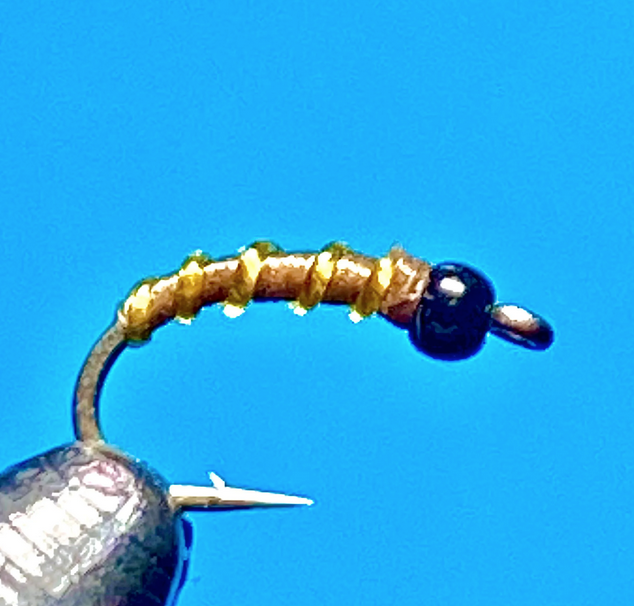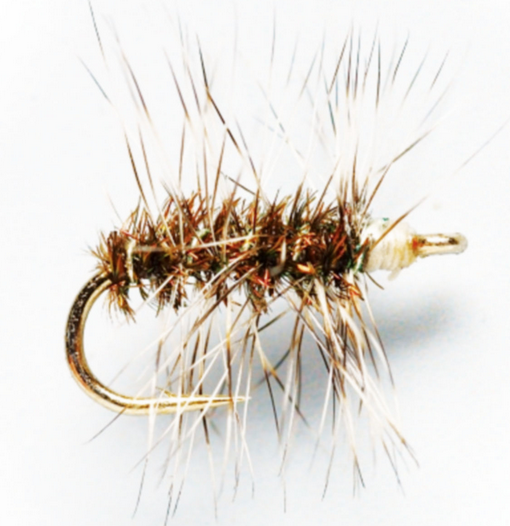Tis The Season: Midge Mania
So we have reached the end of 2022. For our December Bug of the Month, we have returned to where we began the year: the midge. We have come full circle – and for good reason. While midges are in our rivers year-round, their prominence as a food source in the winter months cannot be ignored.
The Lowdown on the Midge Life Cycle
The midge has a very short life cycle. Unlike some other insect species that may take a year or so to evolve, midges develop very quickly. They move from larva-pupae-adult in just a few weeks. Because of this rapid maturation, it’s important to be dialed in so you can adjust for depth, weight, and pattern selection. In the winter months with midges, paying attention to the lifecycle becomes much more crucial for success.
Larva Stage
As Phil Tereyla says, “Focusing on what stage the midge is in is key. When they’re on larva, they’re on larva. You may need to make the change, though, and dial in to pupa and emerger stages.”
Larva can range in size from the very small 24 and 26s in December and January. When they are in the larva stage, midges are found toward the bottom of the river, clinging to rocks or sticks, or drifting through the water. If you seine the river, you’ll see small, worm-like larva wriggling in your seining net.

Pupa Stage
In the pupa stage, midges begin to develop legs, wings, and gills. When they shed their larval sheath, they begin their journey to the surface. As they move up from the bottom of the river, they develop a small air bubble. Because midges are not great swimmers — they are a flying insect, after all — they are very vulnerable in this stage.
Fish are looking at that food source swimming to the surface, and they’ll get increasingly opportunistic to eat as much food as fast as they can.
It’s important for anglers to adjust for depth. You may find that you need to see if fish are feeding on larva closer to the bottom or on pupae higher in the feeding column.
An early morning rig may have larva patterns fished deep and then, as the day – and water — warms up, switching it up to a larva pattern as your first bug with a pupae pattern (or two) trailing that can be productive.
Before it becomes an adult, the pupae may struggle a bit to break through the surface. Because of that, it’s helpful to think of the pupae stage in two parts – emerging and surface emergers. Anglers can have great success by drifting the emerging pupae pattern just a few inches beneath the surface in the foam.
Greg Blessing’s approach is to begin the morning fishing three midge patterns: zebra, mercury, and the Black Beauty.
As the water temps increase, Blessing may switch out the Black Beauty for a Top Secret, or for Jon Easdon’s Blindside Midge, or even change to his own Purple Haze. “The Purple Haze blurs the line between a blue wing and a midge. Sort of a cross-over. And fish will hit it on the swing.”
Pat Dorsey ties up his Top Secret midge
Special treat: Juan Ramirez ties up Pat Dorsey’s Top Secret
Adult Stage
As the midge shucks its pupae sheath and becomes an adult, it will sit on the surface to dry its wings.
Interestingly, often times there can be good dry fly fishing in the winter because of these adult midges. You might see a whole bunch of midges and midge clusters when the conditions are right.
Phil says, when there are midges on the surface, “I’ll skate my midge over the surface rather than always present it as a dead drift. A little motion can put your bug on display and make it stand out from another midge or midge clusters on the water.”
Juan Ramirez emphasizes that it is important to study the rise. If you’re seeing the nose and mouth, the fish are probably feeding on the surface. But when you see the dorsal fin, or the back of the fish, break the surface, they are feeding just below the surface. “Their momentum may be carrying the fish up to the surface after they have eaten. Or you might just see a dimple on the surface rather than a nose and lips.”

Griffith’s Gnat (Maybe not technically a “midge” but this pattern has worked on winter days when fish were rising.)
Tips and Techniques for Fishing the Midge
As usual, reading the water is super important. Fish won’t be using a lot of energy and they’ll stay in slower, deeper water. The presentation has to be slower for two reasons. First, the water is slower. Second, the fish will not move too far to eat because of their lower metabolism and the winter doldrums.
A key to fishing with midges is getting size and silhouette right. Of course, that is not unique to midges. In the winter months, though, when fish may be less aggressive and more selective, size and silhouette will be crucial to getting a take.
The take may be very subtle since it is not an aggressive strike. As Greg Blessing says, “if you can detect a strike in the winter on small bugs, you’ll be able to detect a more aggressive take later in the season. Fishing the winter months improves your fishing for the rest of the year.”
Final thoughts
Winter fly fishing poses challenges, for sure, but when you get dialed in to midge behavior and the fish behavior that follows, tough conditions can be productive days. Want to step up your winter fly fishing game? Sign up for our Winter Fly Fishing class and get some first-hand experience!
Subscribe to our newsletter, subscribe to our YouTube Channel, watch this blog space, and come into the Shop to talk with our expert retail staff about winter fly fishing and midge magic.
